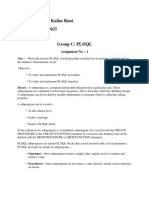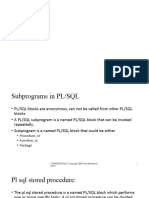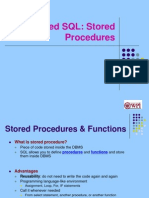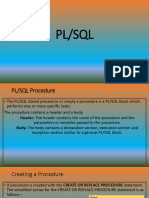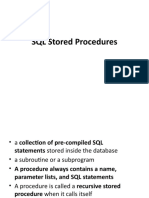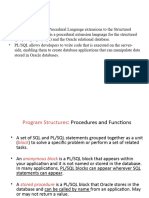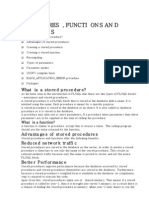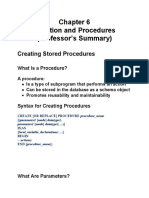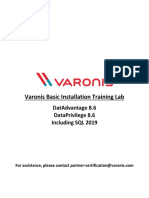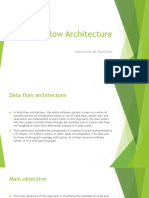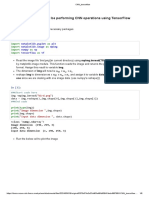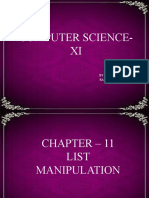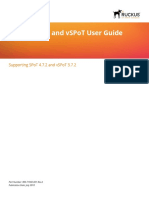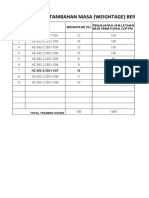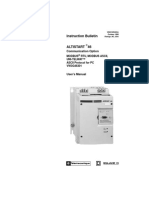0% found this document useful (0 votes)
70 views18 pagesDBMS Procedures & Transaction Guide
This document discusses a database management systems course at Apex Institute of Technology. It outlines the course objectives, which are to understand database concepts, different SQL statements, transactions, and recovery techniques. One of the course outcomes is for students to be able to implement packages, procedures, and triggers. The document then covers these topics, explaining what procedures are, the different parameter modes, advantages of procedures, and how to create, call, and drop procedures. It also provides examples of procedures using different parameter modes.
Uploaded by
mr.khushal03Copyright
© © All Rights Reserved
We take content rights seriously. If you suspect this is your content, claim it here.
Available Formats
Download as PPTX, PDF, TXT or read online on Scribd
0% found this document useful (0 votes)
70 views18 pagesDBMS Procedures & Transaction Guide
This document discusses a database management systems course at Apex Institute of Technology. It outlines the course objectives, which are to understand database concepts, different SQL statements, transactions, and recovery techniques. One of the course outcomes is for students to be able to implement packages, procedures, and triggers. The document then covers these topics, explaining what procedures are, the different parameter modes, advantages of procedures, and how to create, call, and drop procedures. It also provides examples of procedures using different parameter modes.
Uploaded by
mr.khushal03Copyright
© © All Rights Reserved
We take content rights seriously. If you suspect this is your content, claim it here.
Available Formats
Download as PPTX, PDF, TXT or read online on Scribd
/ 18






